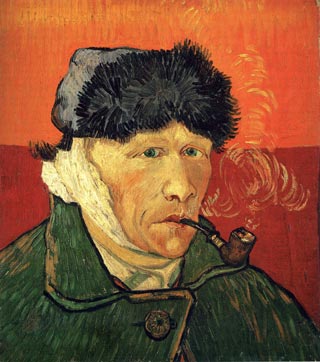“I just don’t want him messed around with.”

In the phrases that make our heart sink in the consult room, this one is up there with “Well, he’s never done that before” and “He’s been nibbling at his back end a lot. Could it be his glands?”
There are lots of things we learn very quickly as vets (which end of a thermometer to insert into an animal, how to drive a car in the middle of the night with an ordnance survey map perched on the steering wheel, etc) and something you realise very quickly in practice is “I just don’t want him messed around with” and its close cousins “Well, he is very old” and “Do you think it’s fair to carry on?” are, more often than not, euphemisms for “I don’t want to hear that my pet’s condition is treatable. I just want him put to sleep.”
Art and science
Your experiences may vary, but I probably hear one of the above quotes most often when I am trying to explain to someone a hyperthyroid cat actually has quite a few options and a reasonable prognosis, or when I am seeing an elderly dog crippled with arthritis that has never been tried on pain relief.
These aren’t difficult diagnoses, but they are difficult situations regardless, and they’re the reason why older, more jaded and incredibly handsome vets like myself go on about there being an art to being a vet, as well as a science.
At vet school, you learn how to palpate a cat’s thyroid gland. In practice, you learn what to do when a client doesn’t want to hear the result of your examination.
So, what do you do when this happens?
Conflicted

A few weeks ago, I talked about compromise, and the forces at play in a consultation – the medical facts, the best thing to do for the animal, and the best thing to do for the client.
However, when a client doesn’t want to treat a treatable condition – and there can be many reasons for this, including financial (how much for those tablets?), logistical (why don’t you try to give him a tablet every day for the rest of his life?) and, sometimes, sadly but truthfully, because they’ve already decided what’s going to happen and aren’t going to change their mind – there’s a direct conflict between what the client wants and what’s right for the animal.
Here’s where the artistry comes in.
The artistry of the job is the real reason many of us find it a stressful profession, and torture ourselves late at night with decisions we made when the textbooks have run out of advice. Did I do the right thing? Should I have pushed harder? Should I have refused to put their dog to sleep? Should I have agreed to?
We all do it differently, which is why we’re all artists here. I’m no Picasso, I’m afraid – though I have made a few serious Jackson Pollocks of things in my time. You see, you could argue that, all those years ago, we made our oath that our “constant endeavour will be to ensure the welfare of the animals committed to my care”. That makes it simple, huh? You refuse to put the animal to sleep. You tell clients they should treat their pet, and that they have a responsibility to help it out of its suffering. Simple.
Animal advocates

On the other hand, if we agree without at least putting up some kind of fight, we haven’t done our job – or at least, we haven’t done the job we’d all like to think we have, which is to be the advocates for the animals when they are suffering, as opposed to the job the vast majority of us actually have, which is to make money for a business.
How do I square this circle without feeling stressed, unfulfilled and unhappy?
I don’t. Situations like this make me feel angry, sad, a bad clinician and a rotten vet. Like all of us, I navigate them as best as I can, trying to feel the owner out, seeing what I can get away with to buy my patient some time. Sometimes I convince the owner to at least try the treatment and see how it goes. Sometimes I put the animal to sleep – and, almost every time, I worry I have made a bad decision and that I caused more suffering along the way.
I don’t know about our patients, but I think I can safely say artistry has caused a lot of suffering to a lot of vets. Sometimes, in the early hours of the morning, worrying about a patient I might have saved, or one I sent home but I feel is still in pain, I think about Van Gogh, and I am not at all surprised that he cut his own ear off.
The art of veterinary medicine. Wouldn’t it be easier if it was all just science?

Leave a Reply